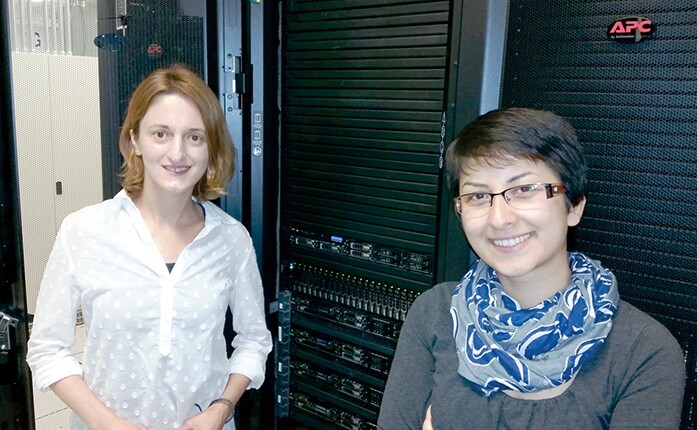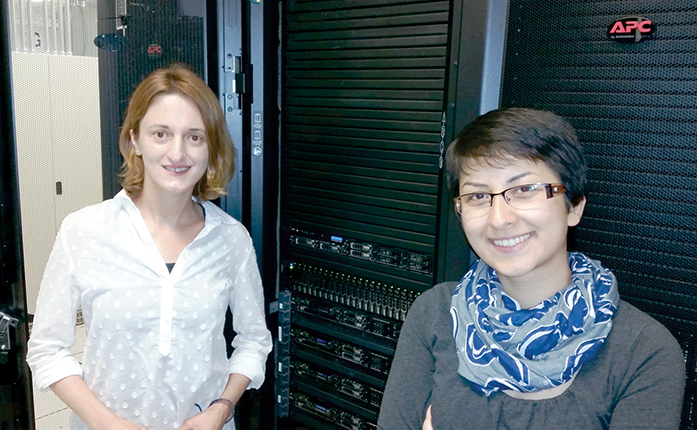Spotting coincidences in astronomical signals
DOI: 10.1063/PT.3.2911
Perhaps a dozen times a year, the IceCube Neutrino Observatory at the South Pole alerts NASA’s Swift Gamma-Ray Burst Mission to follow up on neutrino detections. “That’s infrequent enough that a telescope like Swift, whose time is valuable, is willing to slew and take a look,” says Doug Cowen of the Pennsylvania State University (PSU).
But IceCube spots five or six neutrinos per hour, Cowen says, and useful data may be lost in the winnowing process. “We don’t want to overwhelm [telescopes] with alerts,” he says, but researchers don’t like to throw away data either. That’s what led him and some colleagues to create the Astrophysical Multimessenger Observatory Network, or AMON.
With AMON, which is gearing up to go live, participating observatories send their data to a hub at PSU. There, the data are queried in real time, and when they collectively meet given criteria, alerts are sent out to telescopes to follow up with imaging. The process is fully automated. Alerts go out within five minutes of the initial detection, says Gordana Tešić, a PSU postdoc who joined the project in 2012, about a year into its development, and has been key in setting up its database and real-time infrastructure.
The network lowers the threshold for identifying useful data, says Cowen. In the IceCube–Swift example, IceCube sends alerts only when two neutrinos are detected within 100 seconds and within a certain angle. “If we have doublets, the chance of background from atmospheric interactions is small,” he says. But with AMON, a single neutrino that is observed in coincidence with, say, gamma rays from HAWC, the High-Altitude Water Cherenkov Gamma-Ray Observatory in Mexico (see Physics Today, May 2015, page 29
The main motivation of AMON is to use data that individual experiments cannot exploit. “That opens things up,” says Cowen. “But it also means a lot of noise. We beat down the noise by requiring coincidence between two or more experiments.”
“I am interested in primordial black holes,” says Tešić. “If they explode, it happens on a short time scale, and there are three types of messengers—neutrinos, gamma rays, and cosmic rays.” AMON could keep a look out for all three coming from a defined direction and in a given time window.
Additionally, AMON could aid in discovering transient high-energy events. By pooling data from different experiments, explains Cowen, “the community can jointly search a large fraction of the sky, all the time.”
A collaboration that receives an alert from AMON is invested in the process—its members helped set the criteria—and has agreed to follow up, unless, of course, it is in the middle of a high-priority observation. “When we create alerts, we provide the best time, best direction, and the false alarm rate—the probability that a coincidence is due to chance,” says Tešić.
Eight observatories have so far signed on to AMON; they cover neutrinos, cosmic rays, and much of the high-energy electromagnetic spectrum. Several others, including Advanced LIGO (Laser Interferometer Gravitational-Wave Observatory; see the story on page 20
The AMON duplicate servers have memory mirroring, are located in separate buildings on the PSU campus, and use different power sources. “The goal is to have less than one hour of down time per year,” Tešić says.
The servers cost about $10 000 each, and running AMON comes to less than $100 000 a year. The bulk is covered by NSF, with PSU pitching in. The participating experiments “all cost hundreds of millions of dollars,” says Cowen. “With this small investment, we will enhance the astrophysics that they produce.”
So far, IceCube is the only experiment that sends its data to AMON in real time. Tešić and another PSU postdoc, Azadeh Keivani, have used those data, plus publicly available archival data from IceCube and other observatories, to create and test alert queries. “First light for AMON is when we start getting data from two or more experiments together,” says Cowen. That should be this fall, from HAWC and possibly the Pierre Auger Observatory in Argentina. “And when we make a coincidence sighting, that will be fantastic!”

Gordana Tešić (left) and Azadeh Keivani, postdocs at the Pennsylvania State University and members of the IceCube collaboration, have done the nitty-gritty in developing the Astrophysical Multimessenger Observatory Network.
ADAM FOCHT, ICS/PENN STATE

More about the Authors
Toni Feder. tfeder@aip.org
